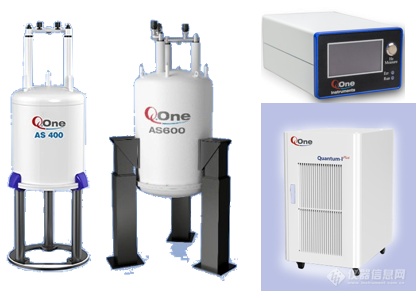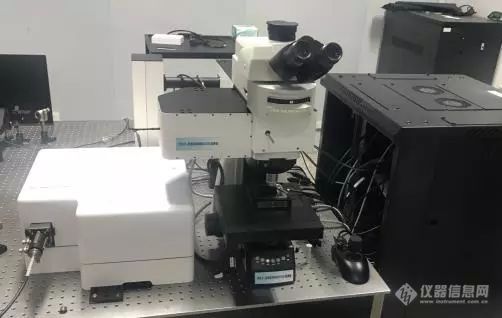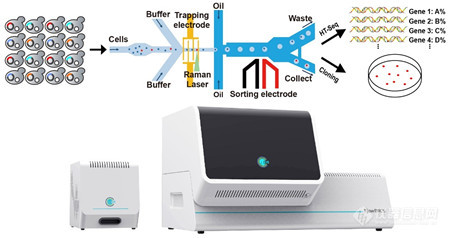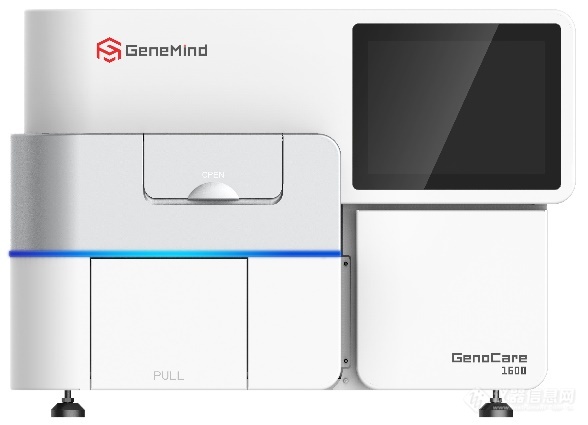In recent years, although my country's instrument technology research and product development have made great progress, in the field of high-end scientific research instruments, in addition to nuclear magnetic resonance spectrometers, large-scale analytical instruments such as high-resolution mass spectrometers and most life science instruments are commonly used. For example, magnetic resonance imagers, super-resolution fluorescence imagers, cryo-transmission electron microscopes, etc. still rely heavily on imports.
On May 17, the Ministry of Science and Technology released the 2021 key special project application guidelines for the "Basic scientific research conditions and the development of major scientific instruments and equipment" and the "Revealing the List" list . The key special application guidelines are laid out in four directions, including scientific instruments, scientific research reagents, laboratory animals, and scientific data. It is planned to support 39 projects, and it is planned to arrange an estimated budget of 559 million yuan for state allocation. In addition, it is planned to support 16 young scientist projects, and an estimated budget of 48 million yuan will be allocated from the state, 3 million yuan for each project.
In this issue, the Instrument Information Network has specially compiled and summarized the localization achievements/ progresses of some representative life science instruments/parts for everyone to understand.
(Welcome to provide the latest achievements and progress to supplement, liuld@instrument.com.cn )
1. High performance flow cytometer sorter
Flow cytometry has been developed for decades, and innovation in instrument technology has continued. The application range of streaming is becoming more and more extensive. In addition to the maturity of clinical applications, some new applications are also being actively developed. At the same time, streaming is also applied to environmental and food safety inspection methods. In the development and production of biopharmaceuticals, streaming is also more and more important. At the same time, the global single-cell analysis market in 2020 is estimated to be 2.68 billion U.S. dollars, and is expected to grow at a compound annual growth rate of 16.9% from 2019 to 2026. The domestic market is expected to be 3.5 billion yuan. The strong market demand and the small market share pose a huge challenge to the development and industrialization of domestic single-cell analysis instruments, and it also brings unprecedented opportunities.
1-1 High-throughput flow Raman sorter-Single Cell Center, Qingdao Institute of Bioenergy and Process, Chinese Academy of Sciences
Chinese Academy of Sciences Qingdao Institute of Bioenergy and bio-process single-cell research center developed the first high-throughput Raman flow sorter product prototype FlowRACS. The equipment solves the Raman spectra collected for a long time, sorting and low flux challenges, to detect enzymes and explore the resources to develop new technical solutions. The above-mentioned work was presided over by Researcher Ma Bo and Researcher Xu Jian of the Single Cell Center, and was supported by the National Key Research and Development Program of Synthetic Biology, the National Major Scientific Instrument Development Project, Shandong Energy Research Institute, Qingdao Xingsai Biotechnology Co., Ltd., etc.
High throughput flow sorters Raman FlowRACS
It is understood that the research team of the Single Cell Research Center of Qingdao Energy Institute invented the pDEP- RADS technology ( see picture above ) , and developed FlowRACS on the basis of this core technology . Study art Raman low background quartz glass microfluidic chip substrate, to enhance the universality of the detected phenotype; indium tin oxide (instead of metal) machining electrode array, in order to prevent thermal damage to the light; using the first pulled The countermeasures for simultaneous droplet wrapping, droplet generation and sorting after Mann detection can prevent the adverse effects of droplets on Raman signal acquisition, thereby improving detection accuracy and optimizing system operation ; using independently developed and designed QSpec software to complete the platform Automatic operation.
Relying on the pDEP- RADS technology, FlowRACS has completely independent national intellectual property rights. It has completed the on-site technical acceptance in June 2020 , and the full-spectrum sorting throughput has reached 600 cells / min. The advent of FlowRACS and the expansion of its application fields will bring new research tools to single cell science and industry, and promote the independent development and innovation of China's cell science high-end brand instrument industry.
2. The third-generation gene sequencer
The gene sequencer is the upstream core barrier of the genetic testing industry, and the "infrastructure" of the life sciences and precision medicine industry. The development of the third-generation domestically-made gene sequencer with international advanced level will enable China to establish a first-mover advantage in this field and occupy a favorable position in future international competition. This will not only fill the gap in China’s basic equipment for gene sequencing and improve the level of equipment autonomy, but also enable domestic life science research institutions to obtain low-cost, high-efficiency sequencing tools, and more effectively develop and utilize China’s abundant genes. Resources to accelerate the development of China's genetic strategy. It will also have a positive meaning for humans to improve their disease prevention and extend their lifespan.
2-1 Single-molecule gene sequencing platform- Zhenmai Bio
True to step biological gene sequencers at the core of independent research and molecular diagnostics upstream manufacturing technology platform, after several years of hard off the attack, in China itself the master gene sequencing platform "strangle hold" key technologies and processes to achieve the enzyme, Nucleic acids, dyes, chips and other core raw materials are independently developed and produced in China , and have core upstream gene sequencing technologies . At present, Zhenmai has launched a self- developed single-molecule sequencing platform and a high-throughput sequencing platform.
GenoCare 1600, a single-molecule gene sequencing platform
The single-molecule sequencing platform GenoCare 1600 is the world's first single-molecule gene sequencer that has passed the clinical trials of medical devices, and the first domestic single-molecule gene sequencer to obtain the EU CE mark.
Its unique single-molecule sequencing technology, total internal reflection fluorescence microscopy ( TIRF ), no need for amplification, automatic operation, one-click reporting, etc., can greatly simplify the gene detection process, improve the convenience of use, and significantly reduce sequencing Cost and inspection cycle. It has obvious advantages in non-invasive prenatal genetic testing ( NIPT ), chromosomal abnormal gene testing ( CNV-seq ), preimplantation screening ( PGT-A ) and other directions, and can provide more convenient and efficient solutions for clinical diagnosis. During the COVID-19 pandemic, GenoCare 1600 , a single-molecule sequencing platform , also performed well in helping Shenzhen CDC to decode the mutation sites of the COVID-19 sequence and the verification and identification of false positive samples.
3. NMR spectrometer
Among chemical analysis instruments, nuclear magnetic resonance spectrometer is a very important research and test tool, and many of its functions cannot be replaced by other means. The nuclear magnetic resonance spectrometer can give information as small as the precise position of the nucleus in the molecule and the small changes in its surrounding environment, as large as the tomographic imaging of the entire human body. It is widely used in the fields of industry, agriculture, chemistry, biology, medicine, earth science and environmental science.
3-1 Nuclear Magnetic Resonance Spectrometer- Wuhan Zhongke Oxford
Based on the core patent technology of Wuhan Institute of Physics and Mathematics, Wuhan Zhongke Oxford Spectroscopy Technology Co., Ltd. introduced the world's leading British Oxford Instruments superconducting magnet technology to produce a complete nuclear magnetic resonance spectrometer with independent intellectual property rights in China. Zhongke Oxford was established in 2013. In 2016 , it signed a magnet technology transfer agreement with Oxford Instruments of the United Kingdom, and established a probe production subsidiary - Q.OneTec AG in Switzerland. Zhongke Oxford is the first domestic high-tech enterprise engaged in the research and development, production and service of superconducting NMR spectrometers.

Zhongke Oxford WNMR-I 400-600MHz Nuclear Magnetic Resonance Spectrometer
4. Superresolution live-cell imaging microscopy
The ultra-high resolution live cell imaging microscope system is a device for long-term, high-definition, and high-sensitivity imaging of live cells. When living cell dyes are used to label specific biological macromolecules in cells, or fluorescent proteins are used to label specific proteins in the body, use the fluorescent dye or the specific excitation light of the fluorescent molecule to excite, and the organism can be detected by detecting its special emission light Macromolecule. On the one hand, the live cell imaging system controls the external environment in which the cells live, and provides suitable temperature, moderateness and pH to keep the cells in a good state. On the other hand, a high-sensitivity CCD is used to capture the weak fluorescence in the cells and observe the movement of fluorescent molecules in the cells for a long time, specifically revealing the change process of biological macromolecules between or within cells.
Suzhou Institute of Biomedical Engineering and Technology, Chinese Academy of Sciences
Suzhou Medical Research Institute of Chinese Academy of Engineering and Technology of Biological Sciences has made a breakthrough in the series of high numerical aperture objective lens, special lighting, super-resolution microscopy imaging system integration and testing, and other key technologies, developed with independent intellectual property rights of confocal microscopy, two-photon microscope , STED super-resolution microscopes and other high-end optical microscopes, as well as large numerical aperture microscope objectives, special LED light sources and other core components. In December 2018, the national major scientific research equipment development project "Development of core components and systems for super-resolution microscopy" undertaken by the Suzhou Institute of Biomedical Engineering and Technology of the Chinese Academy of Sciences passed the acceptance test in Suzhou High-tech Zone, marking that my country has successfully developed high-end products. Super-resolution optical microscope.

The super-resolution microscopy imaging system has been applied to the special related projects of the national key research and development program "Strategic Advanced Electronic Materials", "Major Scientific Instrument and Equipment Development", and "Digital Medical Equipment Research and Development". The development of super-resolution optical microscopes and related core key components is of great significance to promoting the frontier basic research of biomedicine and the transformation and upgrading of the optical microscope industry in China .
4-2 Confocal scanning imaging module——Beijing Century Sunny Technology Co., Ltd.
Beijing Century Sunny Technology Co., Ltd. is a high-tech enterprise specializing in the research and development, production, sales and service of high-speed optical scanning galvanometers, laser and galvanometer motion control cards and their software, laser scanning systems and technical solutions. The independent company design and development of laser scanning confocal imaging module.
CSIM 110 Confocal Scan Imaging Module
The CSIM 110 confocal scanning imaging module is a brand-new self-developed product developed by Sonny based on years of experience in the development of high-speed optical scanning galvanometers and laser marking systems. The user can match it with the original inverted fluorescence microscope to easily and quickly upgrade the inverted fluorescence microscope to a laser scanning (single point) confocal microscope to obtain high-quality confocal images.
4-3 Hessian structured light microscope (Hessian SIM) -Peking University Chen Liangyi team & Huazhong University of Science and Technology Tan Shan team
According to the Ministry of Science and Technology, the National Key Experiment of Membrane Biology and the Hessian Structured Light Microscope (Hessian SIM) invented by Huazhong University of Science and Technology have achieved ultra-fast and long-term ultra-high-resolution imaging of living cells, which can distinguish vesicle fusion channels and mitochondria Crest dynamics. When 188 ultra-high-resolution images are obtained per second, the spatial resolution of the Hessian structured light microscope can reach 85 nanometers, which can distinguish 1/600 to 1/800 size structure of a single hair, and the required illuminance is less than the commonly used The illuminance of the confocal microscope is three orders of magnitude. At the same time, the microscope also realizes ultra-fast and super-resolution imaging of mitochondria in the “energy factory” of cells. For the first time in living cells, it analyzes the activities of inner cristae during mitochondrial fusion and division, as well as the reassembly process of cristae within the mitochondria, and can observe the inner The dynamic changes when the plasma reticulum interacts with mitochondria.

The results of this research will be published in full in the form of "Nature-Biotechnology"
5. Focused ion beam/ electron beam dual-beam microscope
The focused ion beam electron beam microscope system plays an important role in material failure analysis, nanomaterial structure characterization and performance analysis, and nanodevice development. It is mainly used for S/TEM imaging and atom probe tomography (APT) and the highest quality Subsurface and three-dimensional characterization. In recent years, the application of this system in the fields of biology and medicine has received increasing attention. Including the application of transmission electron microscope biological sample preparation, cell and tissue internal structure observation and three-dimensional reconstruction.
( Welcome to contact additional domestic achievements/progress: liuld@instrument.com.cn )
The issue of high-end scientific research equipment's dependence on imports has received great attention from relevant departments. As early as 1998, the National Natural Science Foundation of China established a special scientific instrument basic research project. In 2011, the "National Major Scientific Research Instrument and Equipment Development Special Project" and the "National Major Scientific Instrument and Equipment Development Special Project" were established, respectively managed by the National Natural Science Foundation of China and the Ministry of Science and Technology. One is responsible for original instrument research, and the other is responsible for engineering and industrialization.化. It is understood that from 2011 to 2018, the National Natural Science Foundation of China funded 53 major scientific research instrument projects recommended by relevant central departments with funds of more than 10 million yuan, with an approved funding amount of 3.814 billion yuan; funding for free application by national scientific researchers , a significant amount of research funding body instrument projects in 10 million yuan less than 466, the amount of subsidy approved 3.203 billion yuan; two types of projects total funding of more than 7 billion yuan.
【postscript】
Experts in the industry said that the road to localization is a long way to go. It requires the concerted efforts of relevant companies in the industry chain. It can only be achieved after years of hard work. Many companies have started from fields that are capable of realizing domestic substitution and gradually realized localization. The supporting software is also In synchronous development. We also hope that all sectors of the industry can make progress in the localization of major life science instruments and equipment, and get rid of the "heart" situation of domestically made scientific instruments imported from abroad as soon as possible.
related suggestion

- ·【industry news】
A quick overview of the full t
- ·【industry news】
The National Health and Health
- ·【industry news】
The new version of "Drinking W
- ·【industry news】
5 water quality testing standa
- ·【industry news】
Catalogue of National Food Saf
share to:
keywords: the new laboratory analytical instruments, intelligent pre-processing equipment

